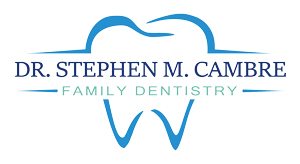What to know
About Gum Disease
Periodontal disease — aka “gum disease” — is the leading cause of adult tooth loss. While it starts out as reversible gingivitis, aggressive gum disease cannot be controlled without the help of your dentist. If not caught early through regular exams and screenings, this silent disease can take a toll on both your mouth and your body.
The Threat to Your Health
One of the most important things we want our patients to understand is the relationship between the health of their mouth and that of the rest of their body. Active gum disease is directly related to more aggressive and hard-to-manage medical problems. Research shows that treating your periodontal infection can also help to improve and lower the severity of health complications like:
It’s also thought that gum disease may be linked to conditions like Alzheimer’s disease. By treating the inflammatory disease, your body’s immune system is boosted and can better manage underlying health conditions.

Stephen M. Cambre, DDS
Get In Touch With Us
Monday: 8:00AM - 5:00PM
Tuesday: 8:00AM - 5:00PM
Wednesday: 8:00AM - 5:00PM
Thursday: 8:00AM - 5:00PM
(985) 643-2284
Stages of Gum Disease
What is Periodontitis?
Gum disease, periodontal disease, and periodontitis all refer to the same thing: an inflammation and deterioration of the gums and bone structure that support your teeth. When bacterial plaque accumulates — and isn’t cleaned away with daily brushing and flossing — it triggers a natural response where the body’s own immune system attacks the infection.

The stages of gum disease begin with simple gingivitis and advance into mild/moderate periodontitis, ending in severe periodontal disease. Gingivitis is completely reversible with good oral hygiene and regular dental cleanings. Symptoms of mild swelling and bleeding usually improve within two weeks. However, more advanced stages require therapeutic treatments and sometimes aggressive surgeries of periodontal disease often include symptoms like:
It’s important to note that if you smoke, symptoms like bleeding and swelling may be masked all together.
To treat gum disease requires a thorough cleaning to remove all calcified tartar deposits from your tooth surfaces (including below the gumlines.) While regular cleanings are preventive in nature, periodontal cleanings are therapeutic and aimed to stop disease from spreading. Scaling and root planing (“deep cleaning”) appointments usually involve numbing one side of your mouth at a time and cleaning the teeth in those areas, followed by a second visit 1-2 weeks later.
After your deep cleaning, we will need to see you every 3-4 months for a periodontal maintenance cleaning aimed to prevent disease relapse.
If bone or gum loss is severe, we may recommend grafting or referral to a specialist to avoid tooth loss.
During your exam, we’ll perform what’s called a “periodontal screening” where the gum attachment levels are measured at six points around each tooth. A natural “pocket” up to 3mm is healthy, but deeper indicates the presence of a periodontal infection.
Contact our dentist in Slidell today to request your gum health exam!

